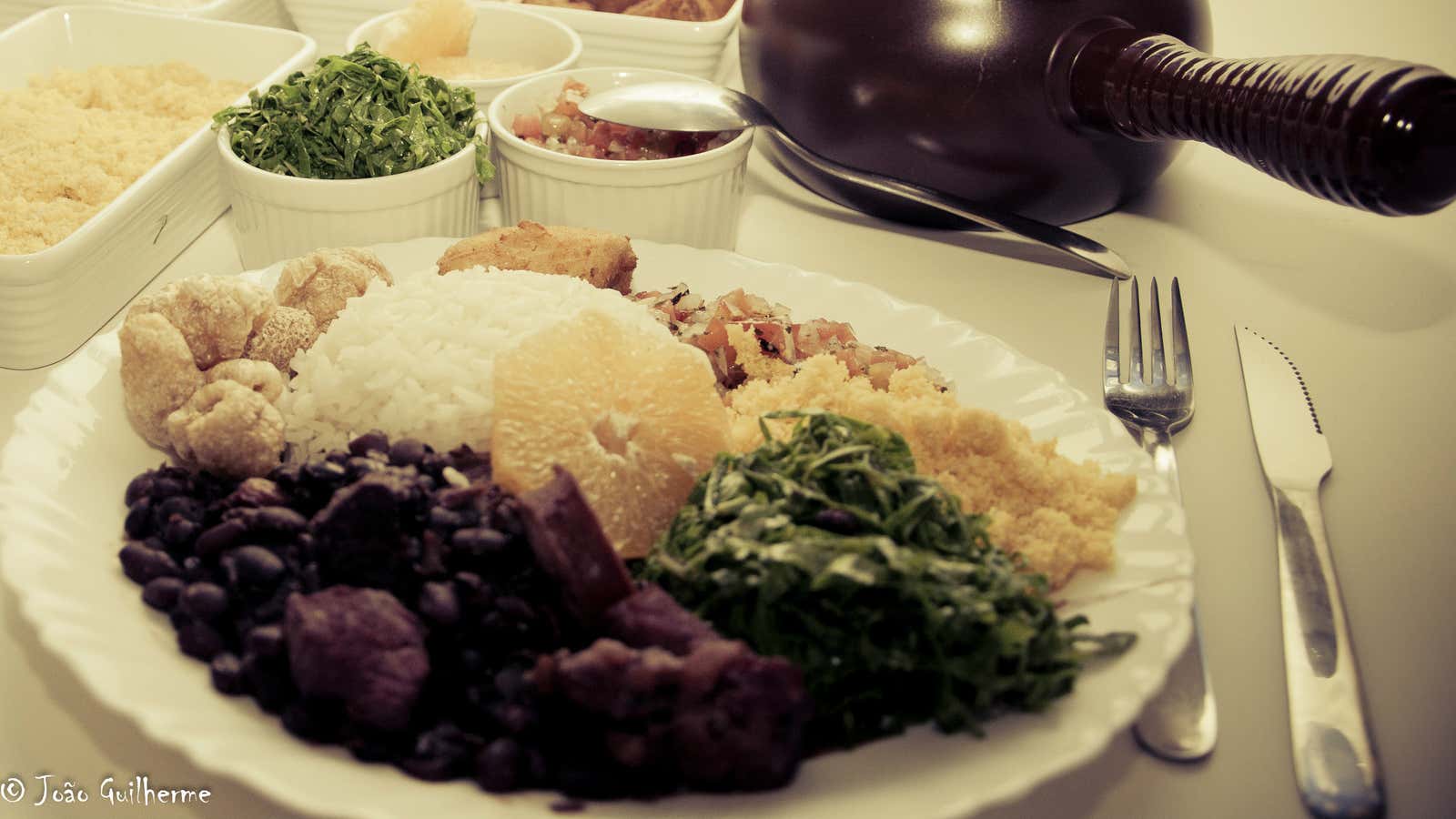Following up on the 152-pages of dietary guidelines it released in November 2014, the Brazilian government has created a four-and-a-half minute video on YouTube with helpful advice for anyone trying to stick to a healthy diet, in Brazil or anywhere else.
Among the 10 steps it advocates: Eat more whole, natural foods instead of processed and ultra-processed ones; cook more; eat with other people instead of in front of the television.
Other steps border on the political, with the government pointing out that the food industry adds too much salt and sugar to prepared or processed food, and telling viewers to avoid fast food and “to be critical of food ads [because] publicity’s goal is to sell, not to inform or educate the consumer.”
“This reflects what most (independent) nutritionists and health practitioners say,” says Carlos A. Monteiro, a professor at the University of Sao Paulo’s department of nutrition in the School of Public Health.
This might sound surprising coming from Brazil, considering that the country is the world’s top producer of sugar. But Montiero says the Brazilian government “is usually very brave” on public health issues.
It hasn’t always been as clearly opposed to ultra-processed foods as it is now, though. (According to Monteiro, Brazilians increased their consumption of ultra-processed foods beginning in the 1990s, just as the rest of the world did.)
Monteiro says the food industry tried to influence the guidelines, and managed to get the launch postponed by a week, but this only strengthened the resolve of the Brazilian minister of health, who presented the guidelines at a meeting of the National Health Council. “The representative of the industry at the council was the only member to criticize the document,” Monteiro tells Quartz, “while all the others, including several representatives of the civil society, were enthusiastic about the guide.”
The featured image was shared by João Guilherme de Carvalho under a Creative Commons license on Flickr. It has been cropped.
